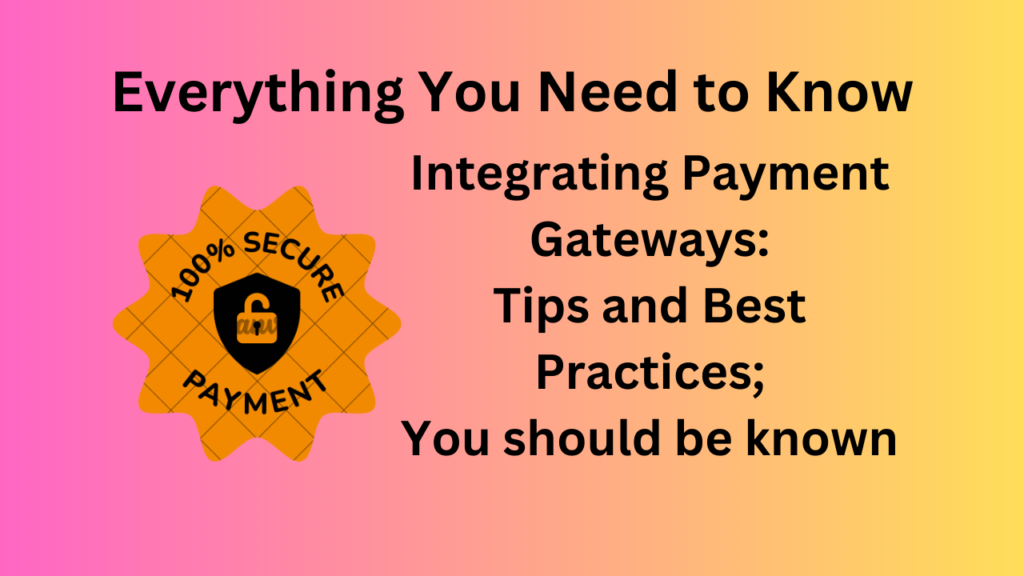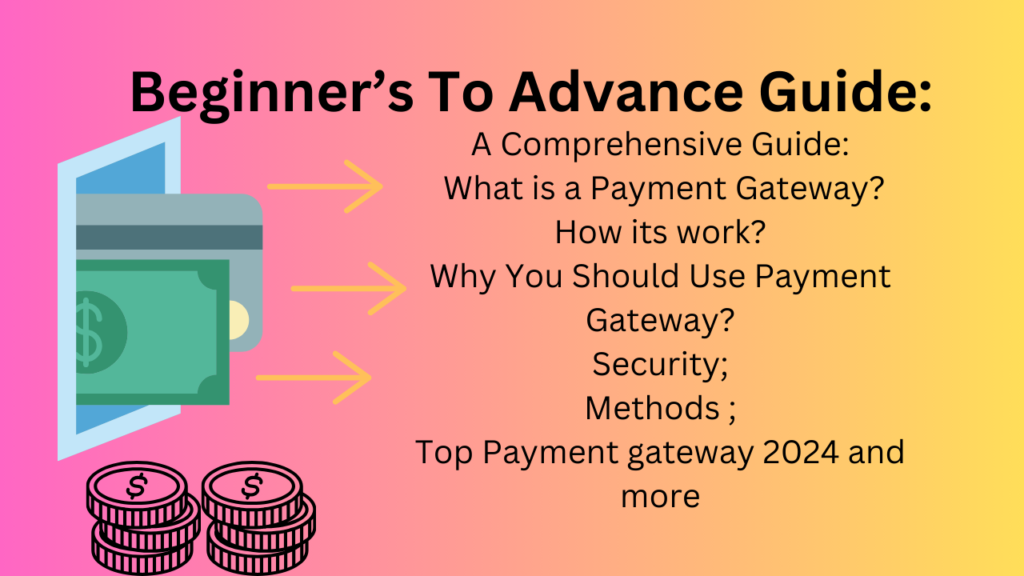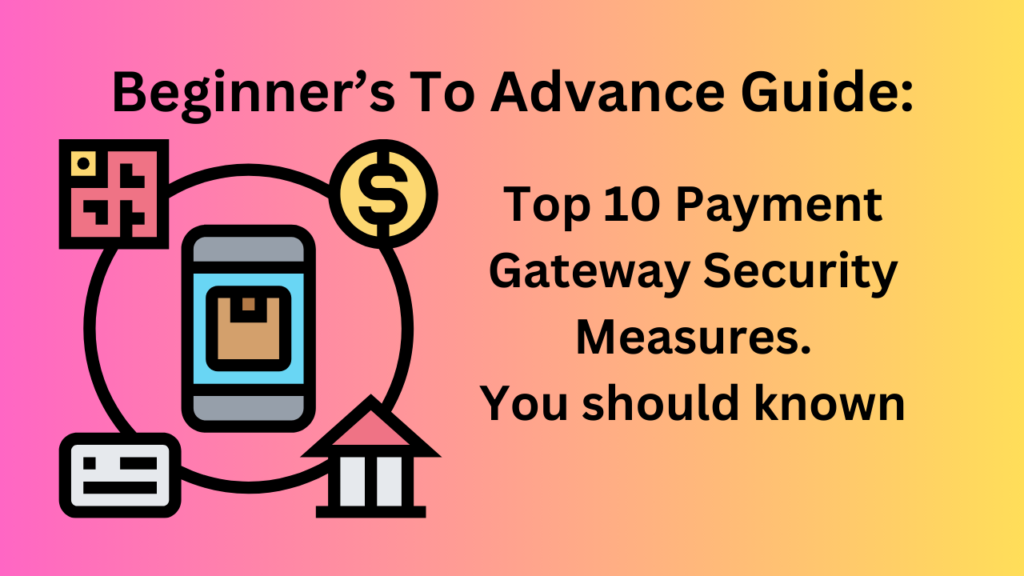Integrating payment gateways into your application or website is a crucial step in enabling online transactions. Here are some tips and best practices to ensure a smooth and secure integration:
Top 12 tips and best practices for a smooth and secure integration
1. Understand Payment Gateway Options
Researching and understanding various payment gateway alternatives is critical since each gateway may provide different services, support different currencies or countries, and charge different transaction costs. Choosing the correct payment gateway for your company guarantees that you can efficiently meet your clients’ demands while reducing expenses and increasing ease.
2. Security
When it comes to making online payments, security is crucial. PCI DSS compliance guarantees that your clients’ payment information is kept safe. Payment information is protected from theft or fraud using features such as tokenization (replacing sensitive data with unique identifiers) and encryption (scrambling data to make it unreadable to unauthorized parties).
3. API Documentation
Payment gateways offer APIs (Application Programming Interfaces), which developers may utilize to add payment capabilities into programs or websites. Understanding the API documentation in depth enables developers to properly construct the integration, manage diverse circumstances, and successfully resolve difficulties.
4. Sandbox Environment
Payment gateways offer a sandbox environment in which developers may test their integration without processing actual transactions. Testing in the sandbox guarantees that the integration works as planned, lowering the chance of mistakes or malfunctions when it goes live.
5. Error Handling
Effective error handling is required to offer consumers with a flawless payment experience. Clear and informative error messages assist users in understanding problems and taking necessary action to remedy them, so decreasing irritation and increasing user happiness.
6. Payment Card Types
Supporting a diverse selection of payment card types guarantees that you can meet the needs of your clients. Furthermore, accepting other payment methods broadens your consumer base and improves ease for people who do not have credit or debit cards.
7. Mobile Optimization
With the growing usage of mobile devices for online transactions, improving the payment experience for mobile consumers is critical. A mobile-friendly payment procedure increases usability and conversion rates, resulting in greater customer happiness and retention.
8. User Experience
A seamless and easy payment experience increases consumer happiness and promotes repeat purchases. Simplifying the payment process, giving clear instructions, and providing different payment alternatives cater to a wide range of customer preferences while ensuring a great user experience.
9. Transaction Logs and Reporting
Transaction logs and reporting tools give significant insights into payment activities, allowing firms to analyze performance, identify trends, and spot any inconsistencies or problems that need to be addressed.
10. Compliance and Regulations
Staying compliance with legal and regulatory regulations is critical for avoiding fines and maintaining consumer confidence. Understanding and complying to data protection laws, financial regulations, and industry standards can guarantee that your payment gateway integration is legal and ethical.
11. Performance Optimization
Optimizing the performance of your payment gateway connection guarantees that transactions are processed quickly and reliably. Scalability and responsiveness may be improved using techniques such as caching frequently requested data, leveraging asynchronous processing for time-consuming processes, and adopting load balancing to properly divide demand.
12. Regular Maintenance and Updates
Regularly maintaining and upgrading your payment gateway integration is critical for addressing security vulnerabilities, including new features or upgrades, and remaining compliant with changes in the payment industry. Updating your integration ensures that it remains reliable, secure, and performs well over time.
By following these tips and best practices, you can integrate payment gateways effectively, providing a secure and seamless payment experience for your customers while minimizing potential risks and technical challenges.
Advantages of using a payment gateway
Using a payment gateway provides various benefits for both organizations and customers:
- Payment gateways use strong encryption and security measures to protect critical financial information, limiting fraud and unauthorized access.
- Customers may make payments from any internet-connected device, including smartphones, tablets, and desktops, eliminating the requirement for physical presence.
- Payment gateways allow companies to accept payments from clients globally, increasing their market reach across borders.
- Gateways offer many payment methods, including credit/debit cards, digital wallets, bank transfers, and cryptocurrencies, to meet varying consumer preferences.
- Payment gateways execute orders faster than conventional methods like checks or manual bank transfers, leading to better customer satisfaction.
- Integration with business systems streamlines payment processing, minimizing human work and benefiting both companies and consumers.
- Payment gateways often have lower transaction costs than conventional payment methods, saving organizations money over time.
- Shorter settlement times result in faster payment receipts, leading to better cash flow management and liquidity.
- Efficient checkout and secure payment methods build confidence and loyalty.
- Payment gateways provide thorough analytics and statistics to help understand client behavior, transaction trends, and sales effectiveness.
Disadvantages of using a payment gateway
While payment gateways provide several benefits, they also have certain disadvantages:
- Payment gateways charge fees for each payment handled, which may be costly for firms with large transaction volume.
- Adding a payment gateway to existing systems may be time-consuming, technical, and interrupt corporate operations.
- Payment gateways may have difficulties or outages, causing payment processing delays or failures. This may annoy consumers and tarnish company reputation.
- Businesses dependent on payment channels may face interruptions from service providers, such as system failures, term modifications, or service discontinuance.
- Payment gateways emphasize security, but are nevertheless vulnerable to cyber attacks and data breaches. This puts sensitive consumer information at risk and may expose firms to legal and financial penalties.
- Payment gateways help firms handle chargebacks caused by fraud, disputes, or unsatisfied consumers, which may lead to financial losses and administrative headaches.
- Payment gateways may not support all consumers’ preferred payment methods, possibly resulting to missed sales or unhappiness.
- Businesses utilizing payment gateways must meet regulatory and compliance requirements, including PCI DSS (Payment Card Industry Data Security Standard), which may incur extra expenses and administrative work.
- Payment gateways may restrict supported currencies or locations, making it difficult for companies to develop worldwide and serve varied customers.
- Despite security safeguards, some customers may still be hesitant to provide their financial information online, resulting to hesitation or abandonment of transactions.
Also read: Top 10 Payment Gateway Security Measures
Also read: Payment Gateway – What is it, How does it work, Why You Should Use and Examples




